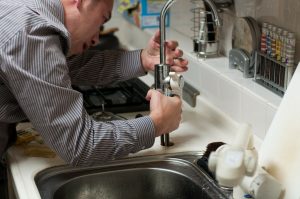If you had a pipe pouring water right into your floor, of course you would do something to stop it and get it fixed right away. Unfortunately, a lot of water leaks aren’t quite that obvious. Even so, people have a very out of sight, out of mind view on matters such as plumbing. If you let water leak unbeknownst to you, you will both allow your water bill to skyrocket and also waste needlessly, which is obviously bad for conservation. To make sure you don’t find yourself in this situation, continue on to find out how you can check for and stop hidden plumbing leaks.
1 – Check Your Meter
This is the easiest way to check your daily water usage. You can usually find the meter right on the outside of your home. Make a note of the current usage, then make sure not to use any water for a while. You can even leave the water off an hour or two while you’re away if you want. Now, check the water again now that it hasn’t been used. If the meter has notably changed, it’s highly possible that you do have some sort of plumbing leaks somewhere. A plumber can help you seek out the problem from there. You can learn all about how to do it yourself, but it’s probably safest to leave the work to a professional.
2 – Dye Test the Toilet
One of the most common plumbing leaks in any home is the toilet tank slowly funneling water down into the bowl. If you hear it running constantly – which lots of people often do – there’s a good chance something along those lines is going on. Rather than just ignoring it as many do, or simply leaving it to chance, you can make sure your tank isn’t leaking water by placing a bit of dye inside of it. Just a couple of drops will do the trick.
After adding the dye, you should check the bowl after an hour or so. If the water has changed colors, then you have your confirmation that the tank is leaking. You can use simple food coloring if you don’t want to mess with any actual dye. Just be sure to flush the dyed water to avoid any stains on the inside of the bowl. A lot of the inner workings of the inside of your toilet tank can be understood with some thorough study on DIY sites and the like, and the components you will need to replace whichever part is faulty are fairly affordable. Singling out which part needs to be replaced can be difficult for the layman however, so again you may want to consider eating the cost of a plumber just to make sure everything is dealt with effectively.
Letting plumbing leaks anywhere in your home is costly and environmentally harmful. Conservation is a huge dilemma facing us these days, so you want to do your part not to add to it. Paying a little extra now to have a plumber make sure your home is leak free will also save you a lot of headaches in the future, so don’t hesitate to have it checked out if you suspect something is up.